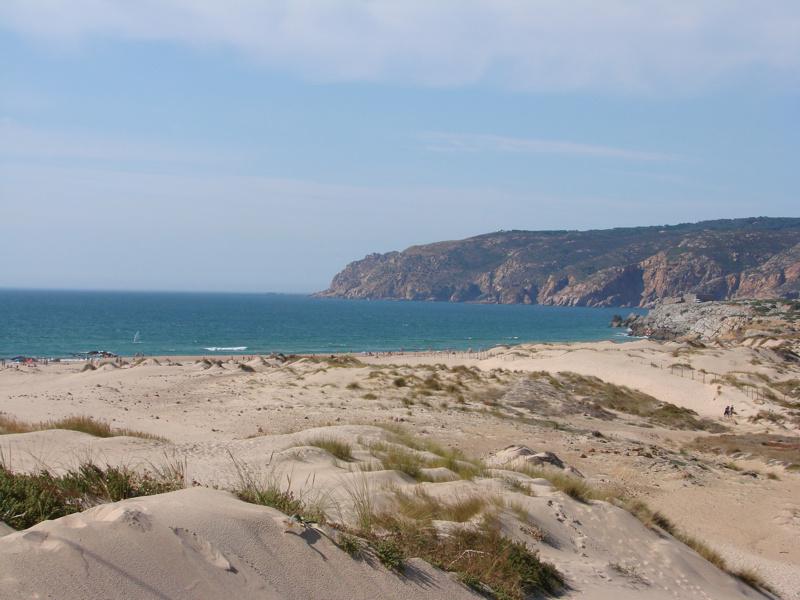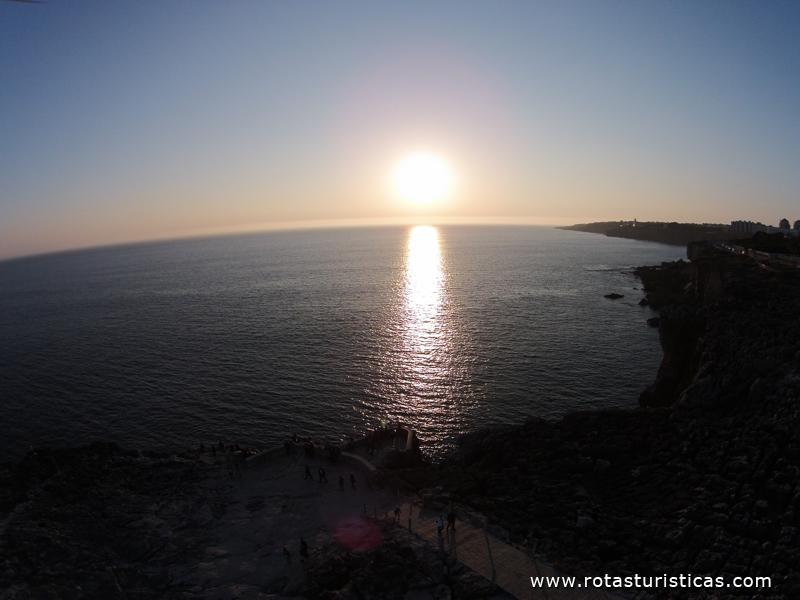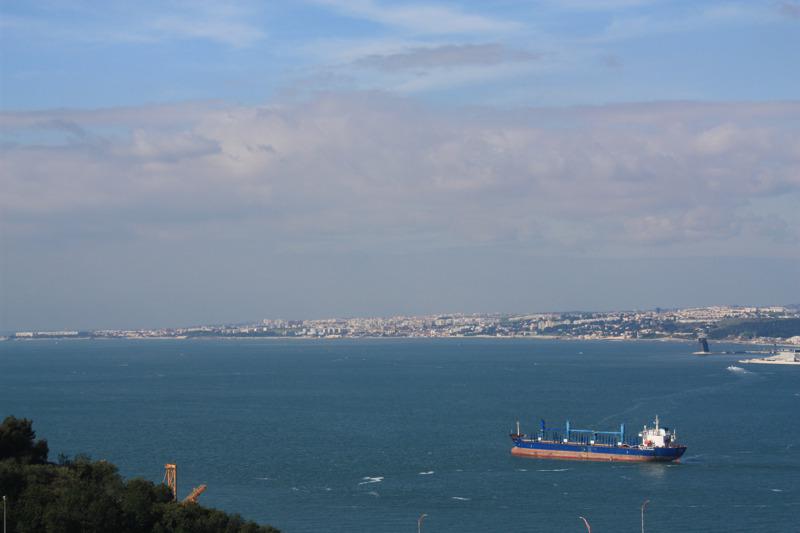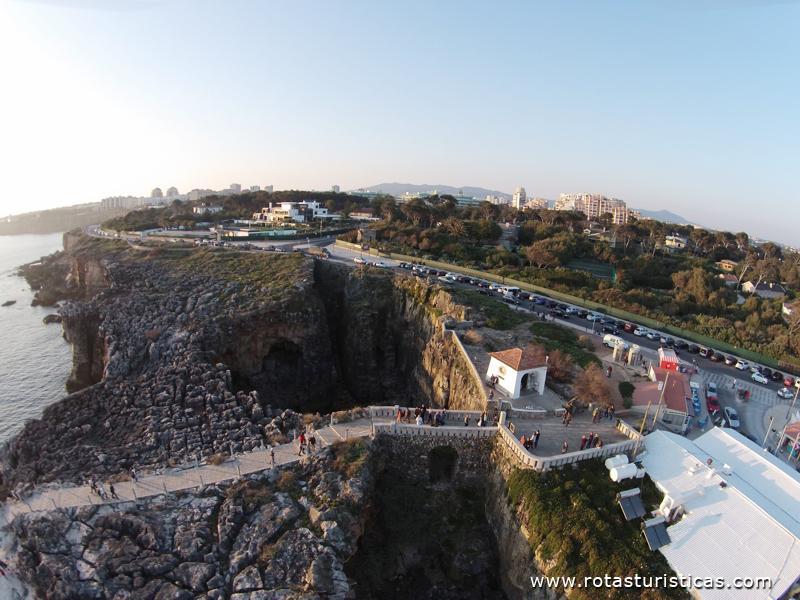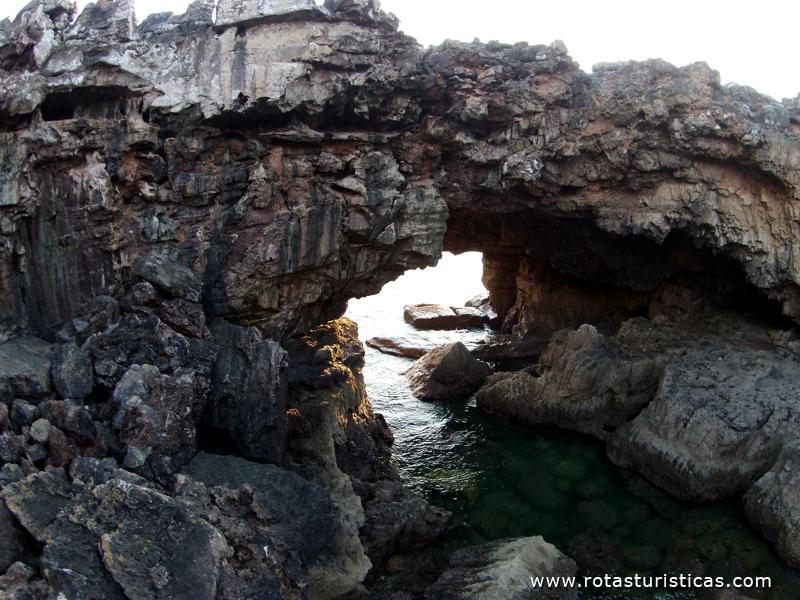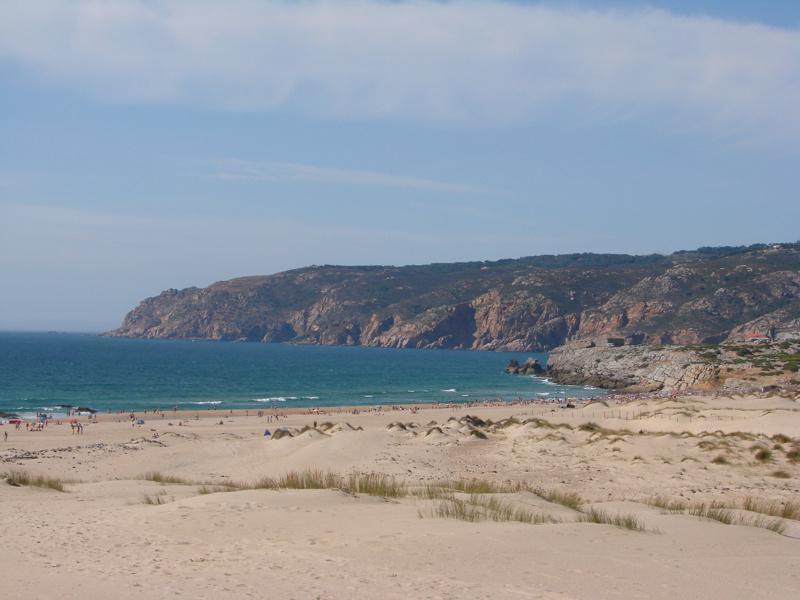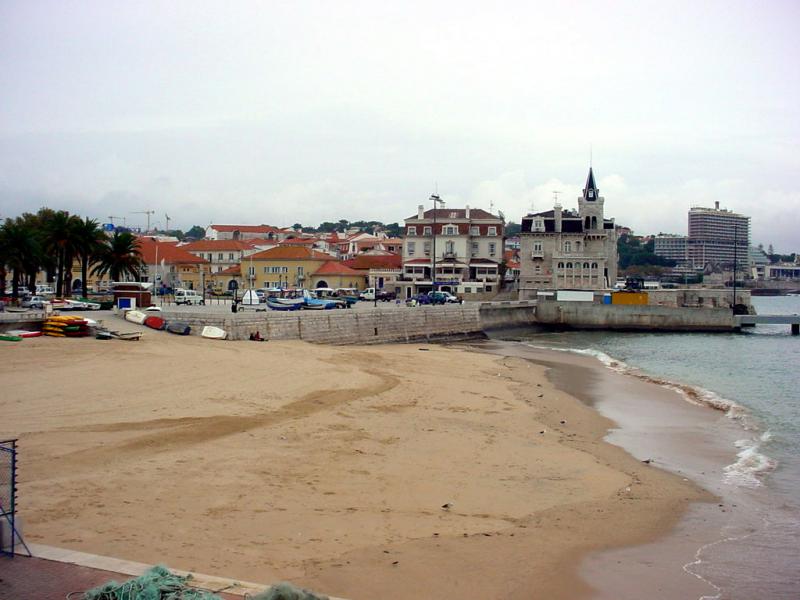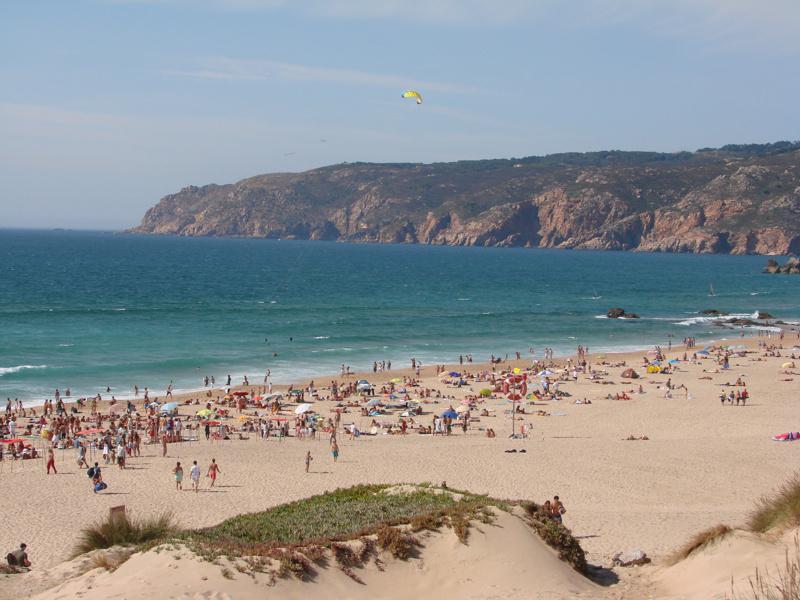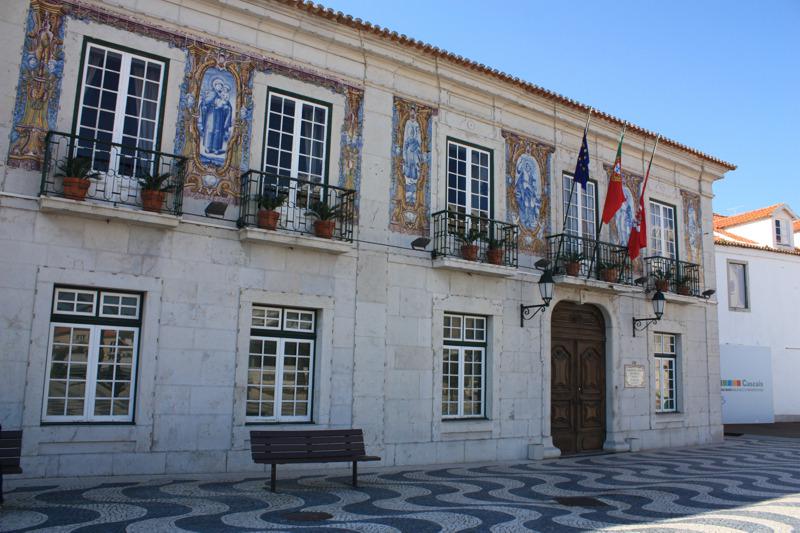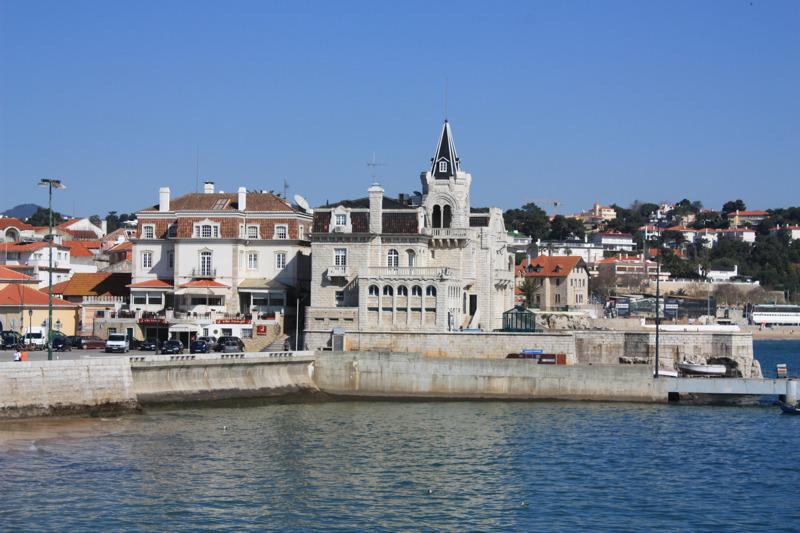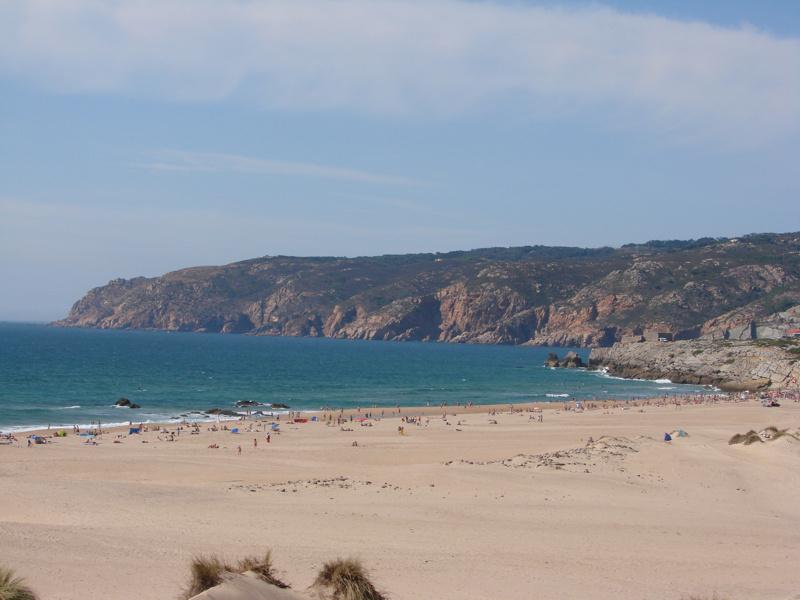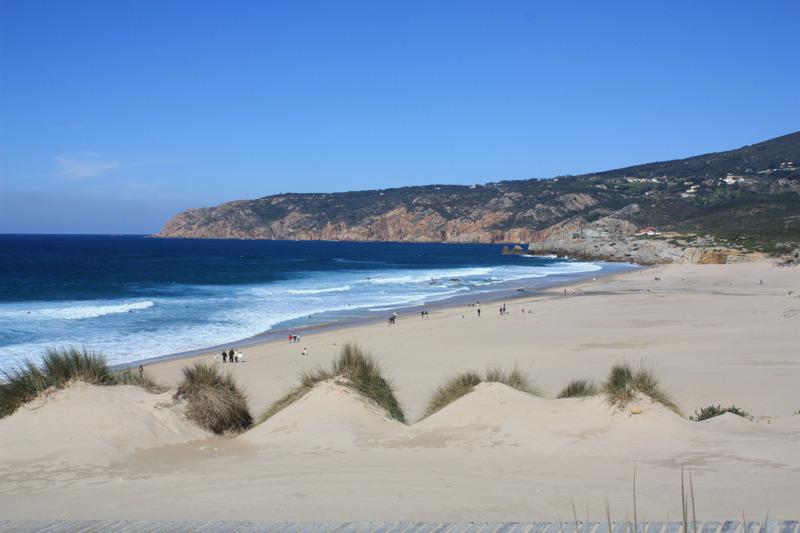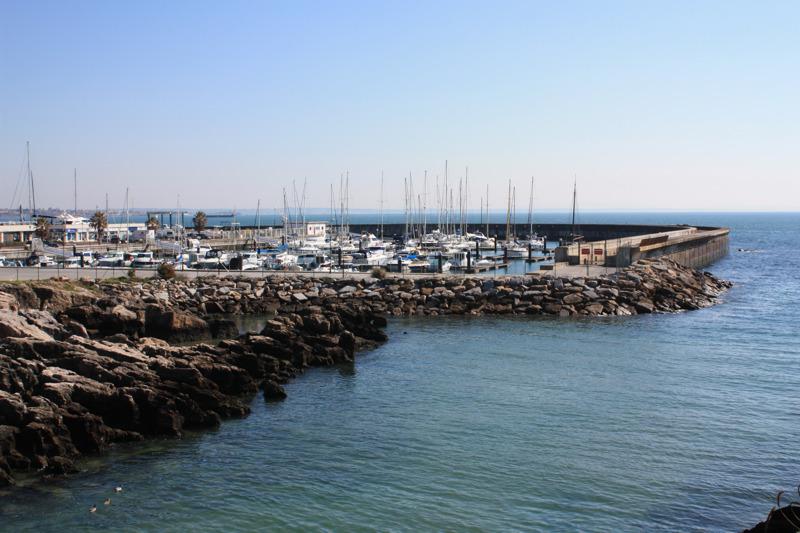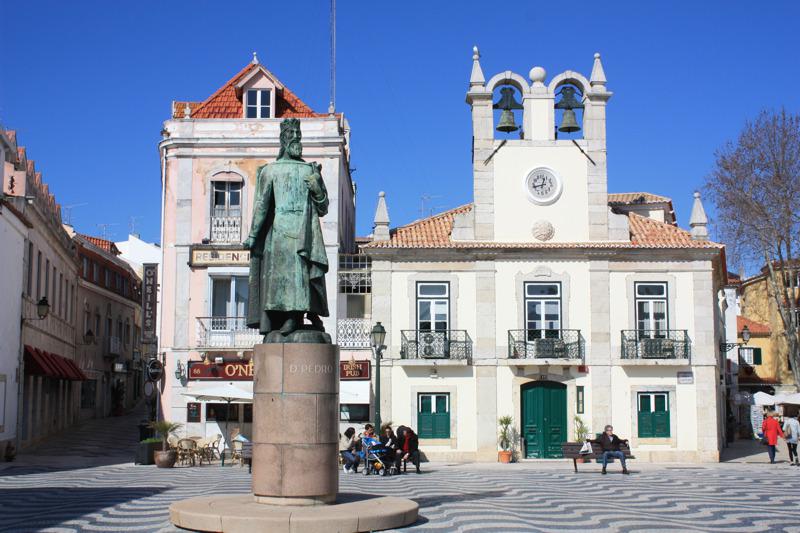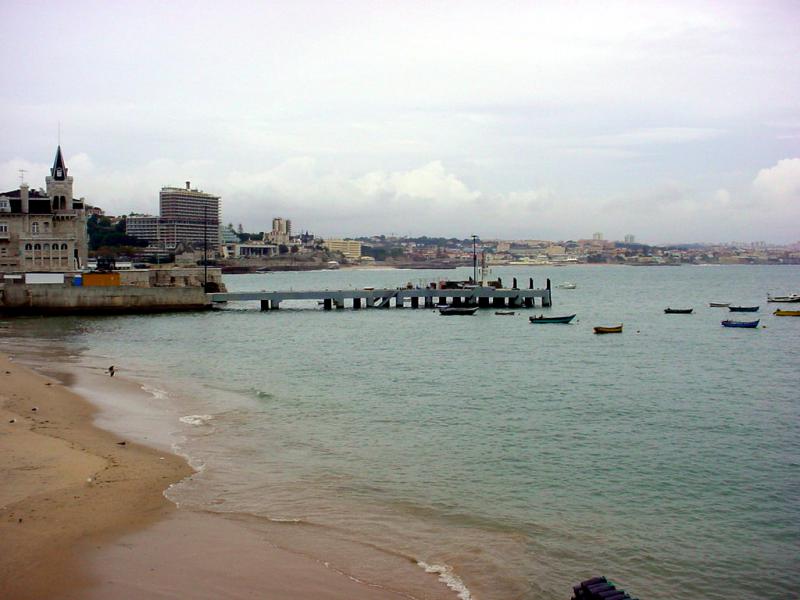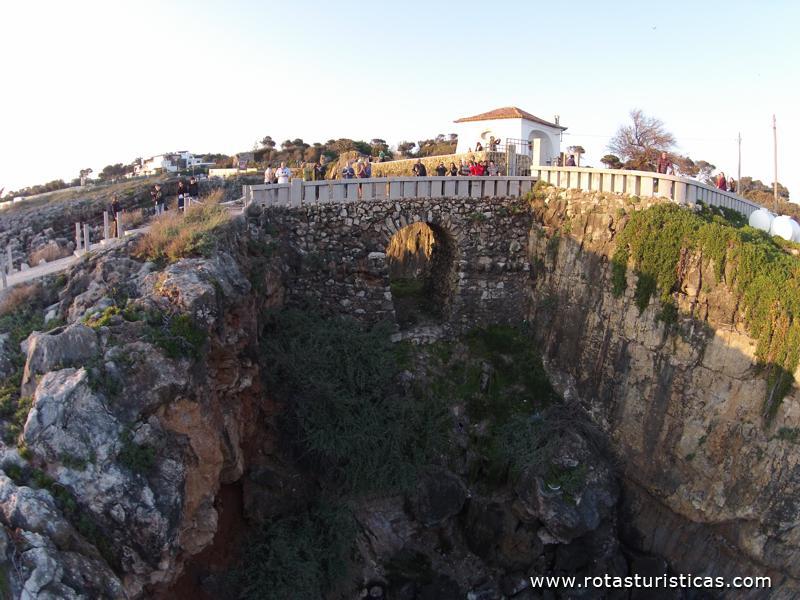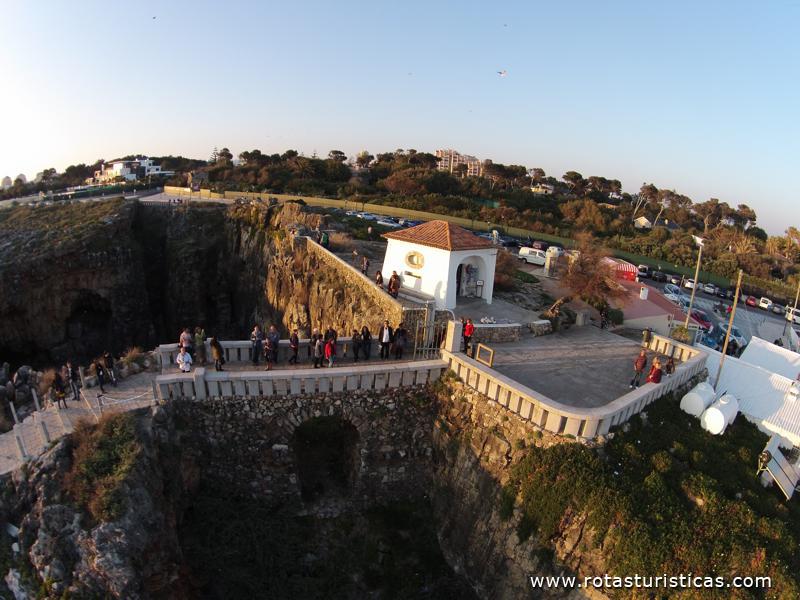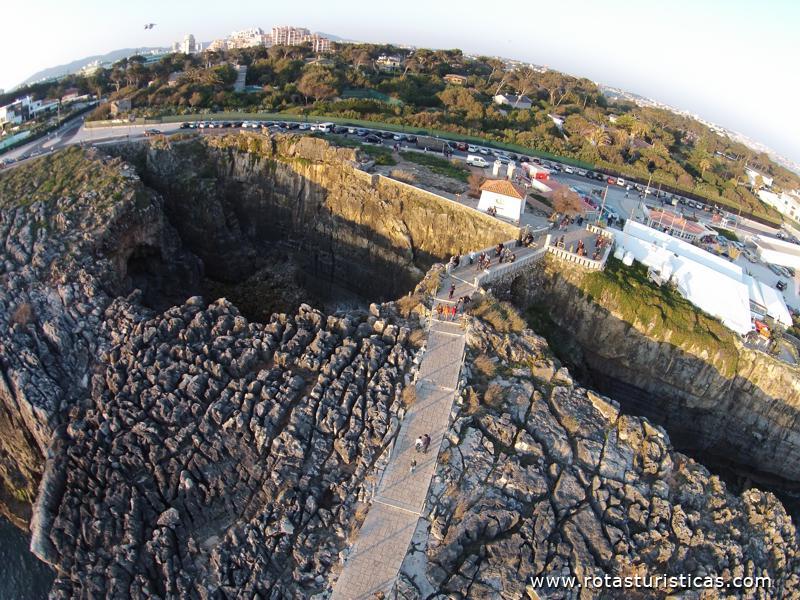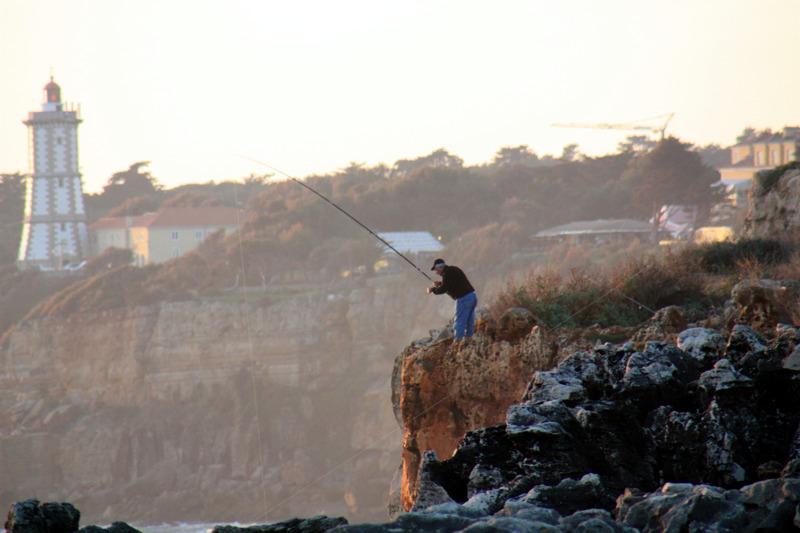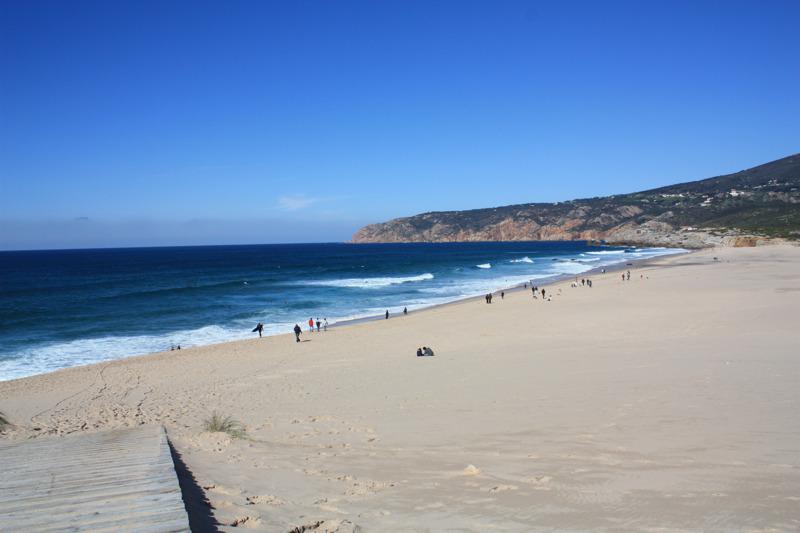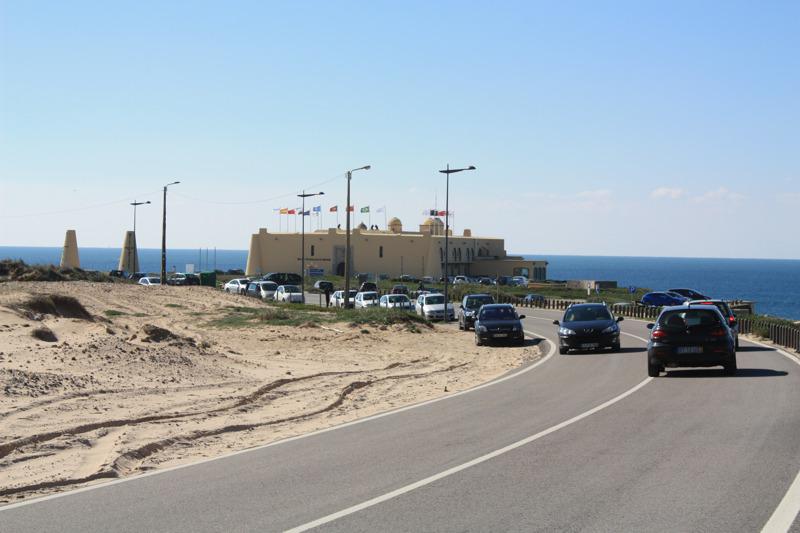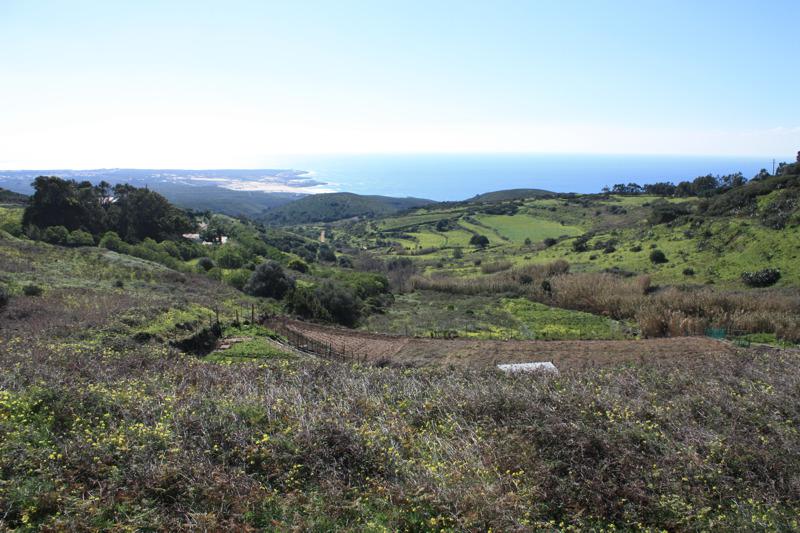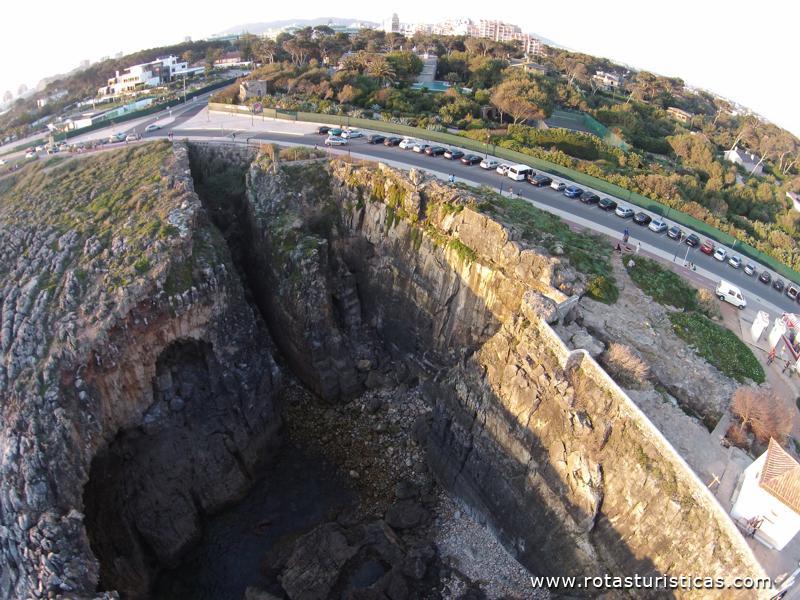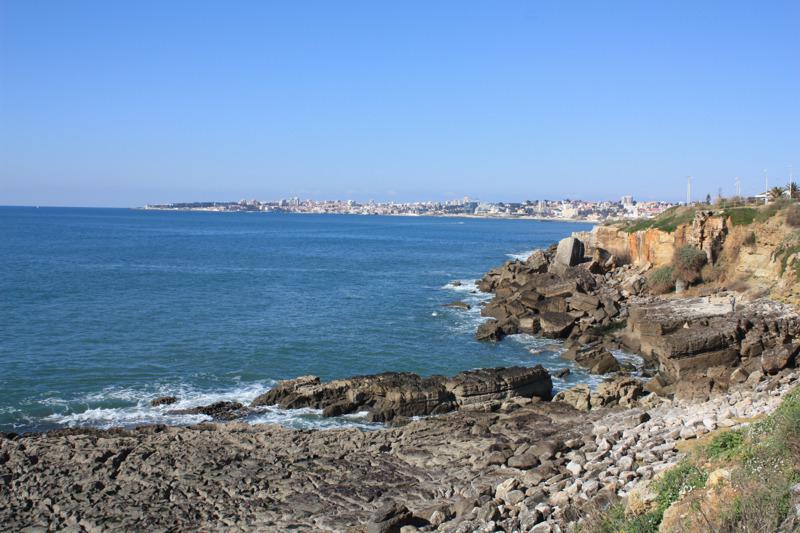Pictures of: Cascais - Portugal
Location map
Airports
Hotels and other Accommodation
Golf Courses
What to visit
Where to Eat
Where to have fun
Consulates & Embassies
World Nomads
The Travel Insurance with the largest coverage

The Travel Insurance with the largest coverage

Cascais
Renowned for its splendid white sand beach, countless shops and charming shopping streets and cosmopolitanism, the fishing village of Cascais has reinvented itself and has become a refined seaside resort and one of the most sophisticated destinations in the area. Lisbon.
The town, located a few kilometers from the mouth of the Tagus, is nestled between the sunny bay of Cascais and the majestic Sintra Mountains. It displays a delightfully maritime and exquisite atmosphere, attracting visitors all year long.
Cascais was once an elegant summer retreat of the Portuguese monarchy during the 19th century and a haven for European royalty during World War II thanks to the neutral status of the country. Over time, this peculiar atmosphere has changed and the city has become a refined culture pole with a vibrant nightlife and an enviable quality of life. However, the splendor and icons of its maritime apogee were maintained until today, through the elegant lighthouses, fortresses and the Citadel of the seventeenth century.
Largo de Camões marks the historic center of Cascais and is one of the favorite areas for locals and tourists alike. Its lively atmosphere, created by the numerous bars and restaurants, turns the square into a charming and unforgettable place in the city - a special place to go out at night! If you are close by, take Rua Direita, the city's main shopping street, where you will find beautiful shops and street vendors. Nearby there are also small shopping centers, and the famous Cascais fairs are excellent opportunities to purchase handicrafts and good bargains.
When you leave the center towards the coast you may be lucky enough to see the fishermen sewing their nets right next to their colorful boats on Fisherman's Beach. In contrast to this almost bucolic scene is the nearby Marina - a modern and sophisticated setting where you can enjoy luxury yachts, taste gastronomic delicacies in fine dining or enter the area's boutiques and bars. Cascais is also a focal point for night owls and offers a wide range of options, from cocktail lounges to cozy jazz bars and trendy nightclubs.
Admire the wild dunes and the indomitable sea of Guincho Beach, an integral part of the Natural Park of Sintra-Cascais. Situated close to the exclusive Quinta da Marinha, with its golf course and leisure facilities, Guincho is the favorite beach for surfers and any lover of water sports, and is also known for its beach bar, rental bicycles and Puppies roofer! Monuments, museums and all kinds of cultural events are a constant in Cascais, from concerts of classical music to art exhibitions.
Take a stroll along the promenade to Estoril, home to one of Europe's largest and oldest casinos. With dazzling luxury villas on the seafront, a famous beach and lively nightlife, Estoril attracts avid visitors to culture and the jet set from all corners of the world for its conferences, film festivals and legendary jazz concerts. Many international sporting events take place in Estoril. Among the sporting developments in the area are Estoril Golf, Estoril Sol International Golf Academy, numerous tennis courts and the racecourse. A relaxing visit to the Estoril Wellness Center and Spa is another magnificent experience that you can enjoy during your vacation.
Lisbon is about a half hour's drive from Cascais and Estoril along the scenic Marginal road. The train is also a great alternative, leaving you very close to the city center. The trip is wonderful and allows the discovery of the coast of the Sun, where the unique beauty of Cascais merges with the historical heritage of Lisbon.
The town, located a few kilometers from the mouth of the Tagus, is nestled between the sunny bay of Cascais and the majestic Sintra Mountains. It displays a delightfully maritime and exquisite atmosphere, attracting visitors all year long.
Cascais was once an elegant summer retreat of the Portuguese monarchy during the 19th century and a haven for European royalty during World War II thanks to the neutral status of the country. Over time, this peculiar atmosphere has changed and the city has become a refined culture pole with a vibrant nightlife and an enviable quality of life. However, the splendor and icons of its maritime apogee were maintained until today, through the elegant lighthouses, fortresses and the Citadel of the seventeenth century.
Largo de Camões marks the historic center of Cascais and is one of the favorite areas for locals and tourists alike. Its lively atmosphere, created by the numerous bars and restaurants, turns the square into a charming and unforgettable place in the city - a special place to go out at night! If you are close by, take Rua Direita, the city's main shopping street, where you will find beautiful shops and street vendors. Nearby there are also small shopping centers, and the famous Cascais fairs are excellent opportunities to purchase handicrafts and good bargains.
When you leave the center towards the coast you may be lucky enough to see the fishermen sewing their nets right next to their colorful boats on Fisherman's Beach. In contrast to this almost bucolic scene is the nearby Marina - a modern and sophisticated setting where you can enjoy luxury yachts, taste gastronomic delicacies in fine dining or enter the area's boutiques and bars. Cascais is also a focal point for night owls and offers a wide range of options, from cocktail lounges to cozy jazz bars and trendy nightclubs.
Admire the wild dunes and the indomitable sea of Guincho Beach, an integral part of the Natural Park of Sintra-Cascais. Situated close to the exclusive Quinta da Marinha, with its golf course and leisure facilities, Guincho is the favorite beach for surfers and any lover of water sports, and is also known for its beach bar, rental bicycles and Puppies roofer! Monuments, museums and all kinds of cultural events are a constant in Cascais, from concerts of classical music to art exhibitions.
Take a stroll along the promenade to Estoril, home to one of Europe's largest and oldest casinos. With dazzling luxury villas on the seafront, a famous beach and lively nightlife, Estoril attracts avid visitors to culture and the jet set from all corners of the world for its conferences, film festivals and legendary jazz concerts. Many international sporting events take place in Estoril. Among the sporting developments in the area are Estoril Golf, Estoril Sol International Golf Academy, numerous tennis courts and the racecourse. A relaxing visit to the Estoril Wellness Center and Spa is another magnificent experience that you can enjoy during your vacation.
Lisbon is about a half hour's drive from Cascais and Estoril along the scenic Marginal road. The train is also a great alternative, leaving you very close to the city center. The trip is wonderful and allows the discovery of the coast of the Sun, where the unique beauty of Cascais merges with the historical heritage of Lisbon.
Official language
Portuguese
Currency
Euro
Main tourist attractions
Sintra-Cascais Natural Park
This natural park stretches from the lush Sintra Mountains to Guincho Beach and the imposing cliffs of Cabo da Roca - the westernmost point of the European continent. Known as the point "where the earth ends and the sea begins" (so described by Camões in the Lusíadas), the cable has a magnificent lighthouse from the 18th century. The dune and mountain scenery of Guincho is the perfect backdrop to inspire surf and nature lovers. Despite being known as one of the windsurfing world championships, it was the James Bond film "In the Service of His Majesty" that projected it to fame in 1969.
Mouth of Hell
True to its name, this deep ravine is one of the great attractions of the Cascais area, having been formed by the fury of the Atlantic against the cliffs. Nowadays, curious visitors flock to this natural wonder to watch the spectacle of the huge ocean waves scatter on the rocks.
Lighthouse da Guia in Cascais
When Portuguese expansion reached its peak in the 16th century, Cascais was one of the first places to have a lighthouse. The lighthouse of Guia was built in the year 1610, and a small hermitage was built nearby, which has the following inscription: "Guide of the men of the sea".
Fort of São Jorge de Oitavos
The fort of São Jorge de Oitavos was built in the year 1641. Its function was the defense of the river Tagus. This fort could incorporate small garrisons up to 18 soldiers along with heavy artillery of 4 cannons, which were removed from the fort in the nineteenth century. Inaugurated in 2001 as a military museum by the Câmara de Cascais, it was restored according to a drawing dated from 1796.
Cabo da Roca
Cabo da Roca is the westernmost point of the European continent, being part of the Natural Park of Sintra - Cascais. Luís Vaz de Camões (the most famous Portuguese poet) described it as the place "Where the earth ends and the sea begins". It is an area of great tourist affluence where you can also find the Cabo da Roca Lighthouse and a shop where you can buy souvenirs.
This natural park stretches from the lush Sintra Mountains to Guincho Beach and the imposing cliffs of Cabo da Roca - the westernmost point of the European continent. Known as the point "where the earth ends and the sea begins" (so described by Camões in the Lusíadas), the cable has a magnificent lighthouse from the 18th century. The dune and mountain scenery of Guincho is the perfect backdrop to inspire surf and nature lovers. Despite being known as one of the windsurfing world championships, it was the James Bond film "In the Service of His Majesty" that projected it to fame in 1969.
Mouth of Hell
True to its name, this deep ravine is one of the great attractions of the Cascais area, having been formed by the fury of the Atlantic against the cliffs. Nowadays, curious visitors flock to this natural wonder to watch the spectacle of the huge ocean waves scatter on the rocks.
Lighthouse da Guia in Cascais
When Portuguese expansion reached its peak in the 16th century, Cascais was one of the first places to have a lighthouse. The lighthouse of Guia was built in the year 1610, and a small hermitage was built nearby, which has the following inscription: "Guide of the men of the sea".
Fort of São Jorge de Oitavos
The fort of São Jorge de Oitavos was built in the year 1641. Its function was the defense of the river Tagus. This fort could incorporate small garrisons up to 18 soldiers along with heavy artillery of 4 cannons, which were removed from the fort in the nineteenth century. Inaugurated in 2001 as a military museum by the Câmara de Cascais, it was restored according to a drawing dated from 1796.
Cabo da Roca
Cabo da Roca is the westernmost point of the European continent, being part of the Natural Park of Sintra - Cascais. Luís Vaz de Camões (the most famous Portuguese poet) described it as the place "Where the earth ends and the sea begins". It is an area of great tourist affluence where you can also find the Cabo da Roca Lighthouse and a shop where you can buy souvenirs.
Top tourist attractions
"Casa das Histórias" - Paula Rego Museum
This inspiring museum was inaugurated in 2009 and is dedicated to the life and work of the internationally known painter Paula Rego. Having been born and raised in Cascais, Paula Rego went to live in England, where she composed a singular and monumental work that glorifies her homeland. The museum features a 50-year career in painting and truly unique pieces designed by you and your husband, Victor Willing.
Conde de Castro Guimarães Museum
This museum, founded in 1931, is situated in a manor house in front of the sea, formerly owned by Count Manuel de Castro Guimarães. Today it houses a wonderful collection of paintings from the 16th-19th centuries, sculptures and antique furniture. The museum is surrounded by a beautiful garden and has a bookstore and a chapel, being an extraordinary example of the aristocratic tonic that so well describes the Cascais of yesteryear.
Sea Museum
This museum pays tribute to the maritime legacy of Cascais and to king D. Carlos I, the monarch pioneer of Portuguese oceanography and who was assassinated in 1908. Rare fossils, shells, some old boats and traces of ships wrecked in the Tagus and Sado are part exposure.
Santini
Santini is not a gelato either - it serves what is considered the best ice cream in the country! Founded by Atillio Santini in 1949, this historic gelato house has conquered and impressed a long list of visitors, including political figures, curious tourists and even royalty. Sample the unique flavors of Santini!
This inspiring museum was inaugurated in 2009 and is dedicated to the life and work of the internationally known painter Paula Rego. Having been born and raised in Cascais, Paula Rego went to live in England, where she composed a singular and monumental work that glorifies her homeland. The museum features a 50-year career in painting and truly unique pieces designed by you and your husband, Victor Willing.
Conde de Castro Guimarães Museum
This museum, founded in 1931, is situated in a manor house in front of the sea, formerly owned by Count Manuel de Castro Guimarães. Today it houses a wonderful collection of paintings from the 16th-19th centuries, sculptures and antique furniture. The museum is surrounded by a beautiful garden and has a bookstore and a chapel, being an extraordinary example of the aristocratic tonic that so well describes the Cascais of yesteryear.
Sea Museum
This museum pays tribute to the maritime legacy of Cascais and to king D. Carlos I, the monarch pioneer of Portuguese oceanography and who was assassinated in 1908. Rare fossils, shells, some old boats and traces of ships wrecked in the Tagus and Sado are part exposure.
Santini
Santini is not a gelato either - it serves what is considered the best ice cream in the country! Founded by Atillio Santini in 1949, this historic gelato house has conquered and impressed a long list of visitors, including political figures, curious tourists and even royalty. Sample the unique flavors of Santini!
Weather
The climate of Cascais is an oceanic climate, with hot summers and winters where temperatures rarely drop below 6 or 7 degrees Celsius.
In summer the average temperatures are around 30 degrees of day, while in winter they can be around 12 or 13 degrees. The nights are cooler, however without extreme temperatures.
The wettest months are November and December and the coldest months are January of February. Being the hottest months, June and July.
It is the ideal climate to spend a holiday in the area all year round, which has more than 300 days of sunshine.
In summer the average temperatures are around 30 degrees of day, while in winter they can be around 12 or 13 degrees. The nights are cooler, however without extreme temperatures.
The wettest months are November and December and the coldest months are January of February. Being the hottest months, June and July.
It is the ideal climate to spend a holiday in the area all year round, which has more than 300 days of sunshine.
Gastronomy
The proximity to the sea and the mild climate, combine with the gastronomic tradition, giving the region an outstanding and varied offer, becoming a unique place to taste the delicious delicacies made with fish and shellfish.
Among the most popular dishes of the region are the Robalo, the Sargo or the unique Linguado de Cascais, very fresh and accompanied by the best ingredients.
The sea offers of course much more. It intensifies the appetite with shrimp, crab, crayfish or lobster, prepared here in a unique and traditional way.
At the end, pamper your taste buds by trying the typical "Areias do Guincho" or the famous "Muggles of Malveira", freshly prepared eggs but with exquisite originality!
As for wines, the quality of the best Portuguese red wines is internationally recognized. The Estoril Coast produces famous wines and digestives such as the famous wine from Colares and the exquisite Carcavelos, which you can not miss the opportunity to sample locally in restaurants in the region.
The offer of restaurants on the Coast is varied and the prices are quite competitive. You can try all the specialties of the region, traditional Portuguese and international cuisine with an exceptional landscape.
Among the most popular dishes of the region are the Robalo, the Sargo or the unique Linguado de Cascais, very fresh and accompanied by the best ingredients.
The sea offers of course much more. It intensifies the appetite with shrimp, crab, crayfish or lobster, prepared here in a unique and traditional way.
At the end, pamper your taste buds by trying the typical "Areias do Guincho" or the famous "Muggles of Malveira", freshly prepared eggs but with exquisite originality!
As for wines, the quality of the best Portuguese red wines is internationally recognized. The Estoril Coast produces famous wines and digestives such as the famous wine from Colares and the exquisite Carcavelos, which you can not miss the opportunity to sample locally in restaurants in the region.
The offer of restaurants on the Coast is varied and the prices are quite competitive. You can try all the specialties of the region, traditional Portuguese and international cuisine with an exceptional landscape.
Other tourist destinations in:
Portugal
Portugal
Other world tourist destinations
Why to book with TRAVEL CLUBE
The best prices
Our partnerships with the world´s largest operators offer research on the best market prices.
More options
At Rotas Turisticos you can book the hotel, buy the air ticket, book the transfer from the airport to the hotel and vice versa, book the local excursions, rent the car, take travel insurance and consult the places to visit and where to go.
Holiday Tips & Destinations
Hundreds of holiday destinations with all the options that allow you to easily choose the destination that best suits your dream vacation.
TRAVEL CLUBE
Links

